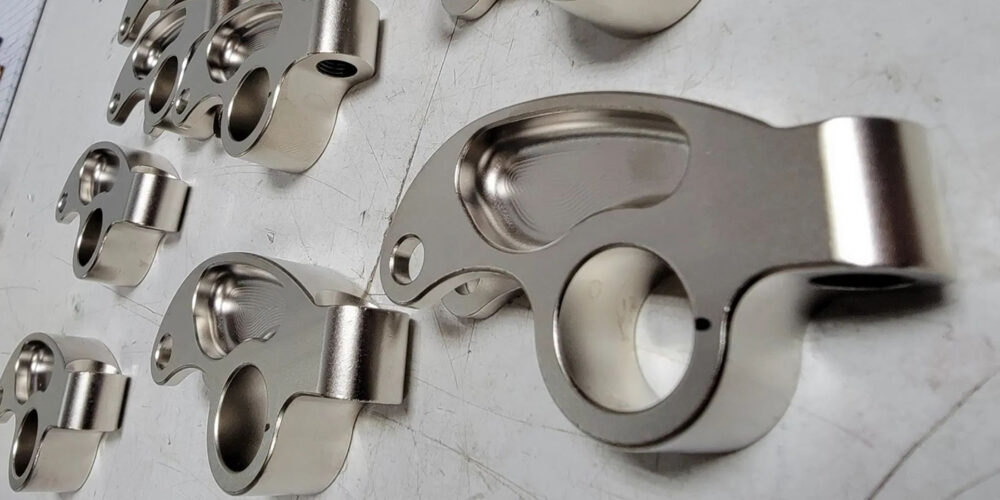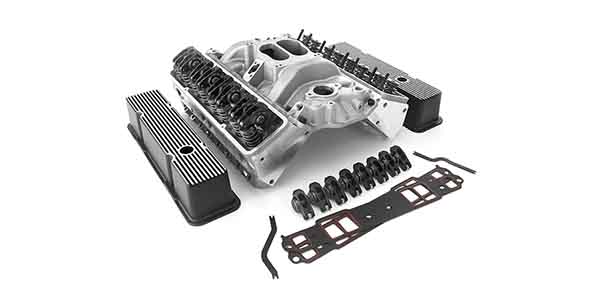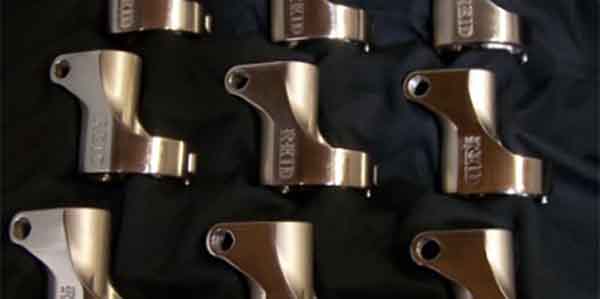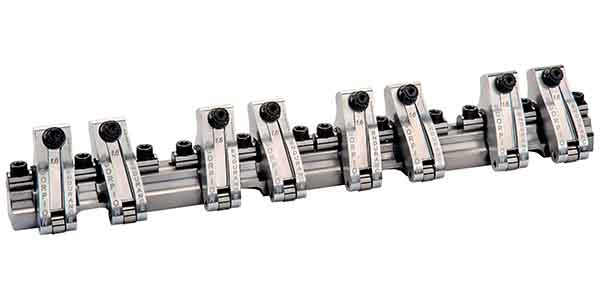The last time we shined a spotlight on rocker arms, it was pre-pandemic. It goes without saying, but a lot has changed in the last three to four years, and the same can be said for rocker arms. While some may not put a lot of emphasis on rocker arm importance within an engine build, they’re foolish not to, as rocker arms are much more than just a lever. Rocker arms contribute greatly to durability, longevity, consistency, and power potential of an engine and its valvetrain componentry.
As such, we thought it was overdue to see what’s new in the world of rockers, so we spoke with a few manufacturers to get insight into what they’ve been focused on lately, and what engine builders and race customers have been asking for from them. Right away, the immediate difference, even from just a few years ago, is an uptick in engine performance and horsepower goals across the board.
Regardless of the engine type or application, horsepower targets and baselines have continued to trend upwards, significantly in some cases. This has caused manufacturers to react with an effort to deliver a better product.
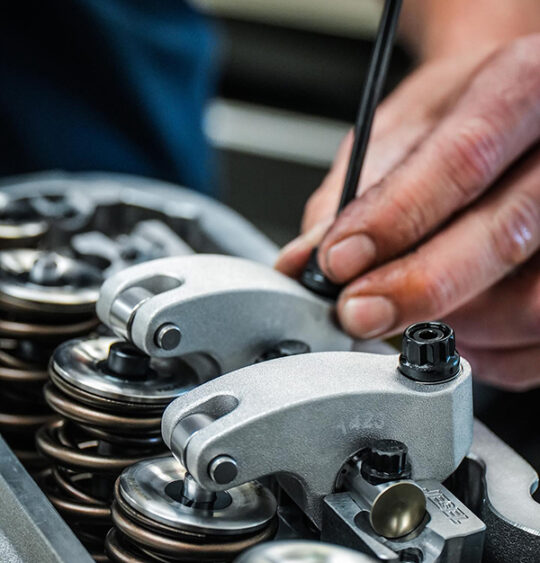
“Back four years ago, the average guy with an LS wasn’t shooting for 2,500 horsepower to the crank as a target for the engine builder,” says Manton Pushrods’ Trevor Manton. “Now, a pretty average size solid roller build is 2,500 horsepower. If we’re talking a daily driver, we’ve got guys trying to make 1,800 horsepower on a hydraulic roller with our bolt-on style rockers. Same thing for a Hellcat. Guys weren’t shooting for 1,500-1,800 horsepower on their nonadjustable valvetrain, and now that’s the baseline is making 1,500 horsepower.
“Once we’re doing 1,500-hp plus on a hydraulic roller, now it’s time to step up to a rocker arm that can handle the two step, taking away timing and creating a detonation that the valvetrain has to live with as a standard. We’re seeing that the market doesn’t really need introductory level parts anymore. They’re wanting something of higher quality.”
Not only are customers asking for higher quality, they’re also becoming accustomed to having to wait a little while longer to get it. And, on the aluminum rocker side of things, Harland Sharp has seen a trend toward a desire for lighter rocker designs.
“Some of our engine builder customers are starting to ask to do lightweight options and take some weight out of the rocker arms,” says Randy Becker Jr. of Harland Sharp. “We’ve come up with a few different concepts that take material off. We’ve also been getting into some custom rocker geometry, and it really just comes down to valve install heights, what kind of cam lift you’re running, pushrod angles, etc., which requires subtle improvements to the already existing product, but it makes it a little bit more specialized and custom tailored to the customer. It’s going to take some time and it’s going to cost you more money, but if that’s what you’re looking for, we can do that.”
While Harland Sharp has seen an uptick in requests for lighter aluminum rockers, both Manton and T&D Machine Products have seen an increase in their steel rockers.
“Steel rockers have gone crazy for us,” says Sheldon Miller of T&D. “With the increased popularity of drag-and-drive events, boats and more aggressive cam profiles, steel is the best solution for longevity, and its stiffer. Engine builders went from wanting a super light rocker arm to now wanting one that is ‘stiff,’ or as stable as possible. It’s a fine line to walk keeping a rocker arm light and stable at high rpm ranges. A steel rocker allows us to achieve those goals.”
Based on your application or preference for a certain rocker arm material, steel could be a better option, but aluminum definitely still has its place in the world. Aluminum rocker bodies have served the race world very well for the past 60-plus years. However, the steel rocker does offer increased longevity.
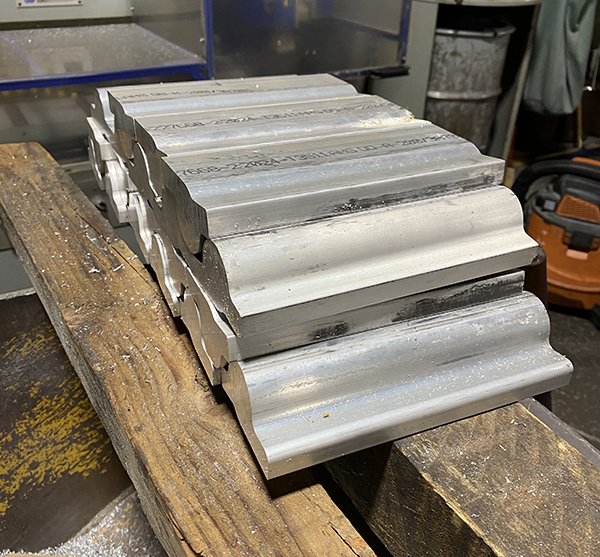
“Every aluminum rocker will eventually fatigue and fail, so applications like road racing or boat racing where the engine is at high rpm for a long period of time, or a street car that’s being driven down the interstate, the lifetime of the rocker arm is ticking away,” Miller says. “In a nitrous or boosted application, we like seeing a steel rocker arm on at least the exhaust side due to the higher cylinder pressures the exhaust rocker sees.
“We do get end users who want steel for their street car, but much of the time for that customer, aluminum will be perfect. It’s never about how much we can invoice – it’s about getting them into the correct rocker set the first time.”
As mentioned, aluminum rockers still have their place, and for Harland Sharp, aluminum rockers have been the company’s bread and butter. According to Becker Jr., they have no plans to move away from the material.
“We’ve always done aluminum rockers,” Becker Jr. says. “The unfortunate issue is we’re having a hard time getting our hands on it these days. But, I’ve known customers with some big block Chevy applications that are probably pushing the 2,000 horsepower range using the aluminum bodied stud rockers on a supercharged motor. I’ve had customers with the LS rocker arms push 1,000 horsepower with those. They do live up to and handle the horsepower quite well.
“I would say my aluminum rocker would stand up to just about any steel stud-type rocker in terms of strength and longevity. There might be a few areas where the steel rocker might perform a little bit better. But, the rocker arms that I get back for service and rebuild are usually 20-25 years old – they’re still working pretty good.”
As for where Manton falls in the conversation of material and market, the company is focused on steel rockers and the upper end of high-performance and racing applications.
“We’re only tailoring ourselves to the upper end market,” says Trevor Manton. “That’s our mindset when going to market. However, we’re having to reset some of our opinions coming from an application like the LS that may be 1,000+ lbs. over the nose for spring pressure and a massive amount of spring rate, and 2,500 horsepower as a baseline. Our safety factor in the weight that we are concerned with is a lot different than a 360 Sprint Car where we’re putting 100+ lbs. on the seat with a moderate rate, but we don’t even have 700-lbs. over the nose. You’ve got to have some relativity and concern to the overall excess safety factor in your engineering process, so that we don’t overengineer it as we would in a 2,500-horsepower application, but still make it a durable rocker arm that we feel should outlive the entire long block. There should not be a component piece within the bottom end that would outlive the top end of our hardware. If you had one of our rocker systems on a 360 or a 410 [Sprint Car], we would be embarrassed if it didn’t go a decade or say 3,000 nights.
“We overengineer everything, and we’re learning in the last couple of years, because of other markets asking for our help, that it doesn’t have to be overengineered to the same safety factor as a Top Fuel car.”
To manufacture a better rocker, Manton has upped its five-axis CNC capabilities, and has been looking into making more and more complex stands and more universal rocker arms to help meet the needs of more customers.
“We’re looking to keep the total weight down while keeping the strength up and also keep a more standardized part on the shelf,” says Jordan Manton. “What we’re trying to do is get a little bit more complex in the machining to be able to have a simpler part that works better. When you have less complexity, you usually have less opportunity for failure, so we keep more of the opportunities for failure in-house with complex machining where we can keep an eye on it and then once it’s in the motor running, the parts are a little simpler, but it makes them stronger and more resilient. That’s the direction we’re trying to move and new equipment is letting us do that.”
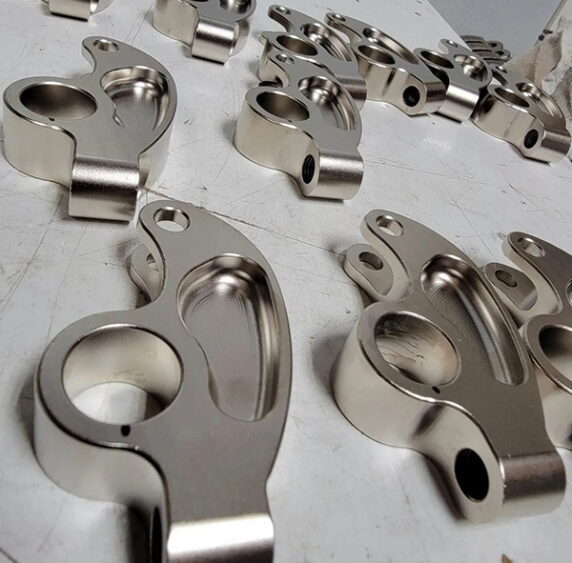
Rocker arm manufacturers are working to make components both lighter and stronger to deliver higher-quality parts for higher-horsepower engines.
The decision of material type is largely driven by application and horsepower, but the selection process and whether to use a stud mount, shaft style or pedestal mount rocker system, comes down more to the engine and the cylinder head you have, as well as application.
“Engine, application and budget dictate your rocker mount options,” Trevor Manton says. “We have good, fast and quick, and you can only get two of those three options. If somebody wants fast and good, it’s going to be expensive. You could go to one of our bolt-on stud mount rocker arms that you can put onto a pedestal mount head like an LT or an LS or a BR7 Brodix head where it’s got the cast-in pedestal. Then, you would have our tool steel roller rocker arm using forced oiling from the lifter, feeding the bushings at the shaft with pressurized oil to keep the main bearings with increased oil pressure, lower volume through the pump.
“But, if the customer had an unlimited budget in an extremely high-horsepower application, he’d probably go to a Noonan billet head that’s still water jacketed and could be used on a wet block and then we would use a steel rocker arm that would be shaft mount and that would still have an adjusting screw, a force fed bushing, a roller tip made from the same material, but now there would be less likelihood of the cylinder head having a lack of fastener strength because we have two fasteners per rocker. There is a fit for each market and budget.”
If you’ve got low to medium power, a stud mount rocker is a great option. As people push into really high horsepower, a need to go to higher-end rockers or a shaft mount set up becomes more crucial. But, there is a degree to where shaft-mount rockers aren’t needed for certain applications, so you could be spending more money than you need to.
“Everybody associates the shaft rocker arm for a small block Chevrolet as being superior to a stud rocker,” Becker Jr. says. “It’s a better product, but it also has its place. For as costly as a shaft rocker is, I’d say 25% of the people who are using them probably don’t even need them. They’ve just learned or assumed that it’s the best way to go. But, as far as benefit and gain out of it, there’s a point where it’s going to make zero difference and then there’s a point where it’s going to make all the difference in the world.”
These decisions are all part of the selection process for rocker arms, and consulting a rocker manufacturer or an experienced engine builder is definitely recommended to understand the many intricacies involved.
“The very first thing I ask is what head is being used,” T&D’s Miller notes. “Is it directly from the manufacturer or did someone else port it? This starts to establish how mild or wild this combination is. If the head is direct from a manufacturer, you pretty well know that it’s going to have standard valve lengths and a nominal lift. If it’s outside of that, then things start to get fun.
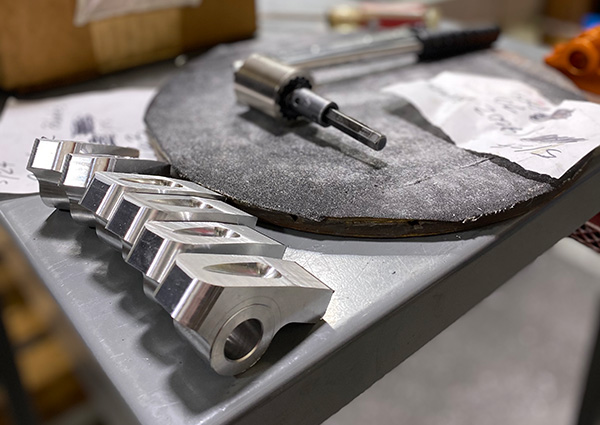
While steel rockers have been on the rise, aluminum rockers still have their place in a number of engines and applications.
“Once we establish the basic information, we ask what the engine is being used for. This will start to help with recommending certain options like steel, spring oil holes, needle-bearing tips or bushings instead of bearings, and so on.”
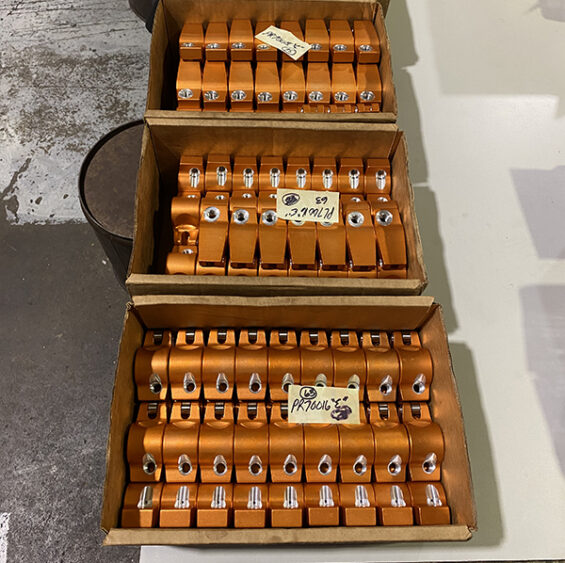
From there, understanding the kind of cam lift and valve spring pressures begin to factor into the discussion.
“Those are the key questions I ask when I’m trying to help a customer figure out what rocker to go with,” Becker Jr. says. “If I know it’s a big block Chevy and you’re using this aftermarket head, well, I know that a little bit shorter fulcrum rocker is going to work better on that head than the standard big block. From there, it’s lift and spring pressure, which the bigger lift, bigger spring pressure applications might be more suitable for a heavy-duty rocker arm. However, the majority of builds can use our original series rocker arms.”
Trevor Manton likens rocker arm selection to buying insurance for your home. How much you spent on your house typically tells you what kind of insurance you’ll want to have. The same could be said of selecting the right rocker system for your engine.
“When somebody has spent a massive amount of money in turbo systems, fuel injection systems, tuning, etc., then go buy yourself a good valvetrain system that makes you feel comfortable to go utilize the other investment,” Manton says. “But, if you have an eBay crate motor, a lot of times it’s cheaper to buy a new one than go through a rebuild, but that’s based off the customer and what their goals are. Are they building cheap, fast, or reliable?”
Now that we’ve covered what’s been new in rocker arm land and some of what goes into the selection process, there are still things people should know when it comes to installing rockers. For starters, following instructions is strongly recommended.
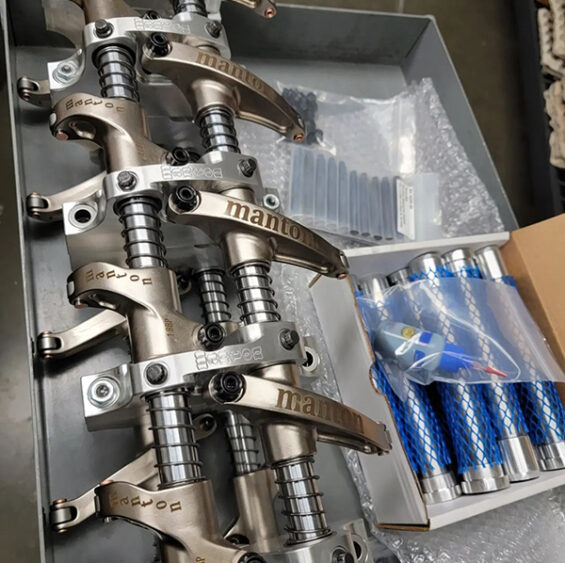
“The number one call we get is installation issues,” Miller says. “Once we get the customer to follow the instructions and use the stand height gauge, things are perfect. This also helps if we do encounter an issue because we know where the roller tip should be compared to that gauge and then can make adjustments from that point.”
Some common mistakes also stem from the pushrod side of things or a rocker arm binding on the stud.
“A lot of that plays into the idea that they’re trying to do mid-lift rocker arm geometry,” Becker Jr. says. “I don’t disagree with the mid-lift rocker geometry, but our product wasn’t made to work the way that concept came about. The mid-lift geometry helps to figure out your pushrod length. They start setting it up and all of a sudden nothing’s lining up the way that it’s supposed to.
“What happens is the example they saw online might’ve been using a special made rocker arm, or it might’ve been an application in which the valve length or the cam lift were different, because there’s a lot of variables that affect that. In some instances [mid-lift geometry] works out, and in a lot of instances it doesn’t.
“We either get into making a specialized rocker arm or I’ll just explain to them that with our rocker arm, the way it was designed, you want to start out by keeping it as low on the stud as you can, and then bring up the back of the rocker until the roller is behind the center line of the valve stem (.030”-.040”). Then, start there with your pushrod length. Don’t worry about any mid lift. Just let the rocker roll across the middle of the valve and leave a pattern in the center that might be .080”-.110” wide. The narrower the better.”
Something else to keep in mind about rocker arms is that often times rocker arm advertised ratios aren’t their actual ratios.
“You need to check piston-to-valve and do a little bit of due diligence, because 50% of the time it’ll be what’s advertised and 50% of the time it’s actually a point higher,” notes Jordan Manton. “They just advertise it as lower, so it performs better than the other guy. You then think that company A is way better than company B, whereas company A is actually lying to you a little bit and company B is being honest on what it is. If you get valve to piston, there’s a problem.”
To help remedy some of that, a valvetrain mockup can go a long way, and to that point, Trevor Manton says using two dial indicators instead of one can lead to much better results later in your build.
“If you use two dial indicators, put one on the backside of the rocker arm and one on the valve tip,” Trevor says. “Do the rollover test and measure with static spring pressure the movement at the adjusting screw side of the rocker and at the roller side or the retainer side at the valve and what is the movement? Is the rocker arm flexing at static when we’re rolling it over with the actual spring pressure? This helps you know which component is creating a valve inaccuracy.
“That’s something we’re starting to notice a lot with aluminum rocker arms and big block and small block solid roller applications where there’s a large amount of spring pressure. Guys are adding more rocker arm ratio, so the inaccuracy of the valve trace is being seen more in the rocker arm than necessarily the pushrod because the general consumer has all agreed that bigger is better when it comes to pushrods, and it has now changed the weak link. Understand where your weak link is in your valvetrain, so that way you best understand why you’re seeing negative side effects – if you are.” EB

